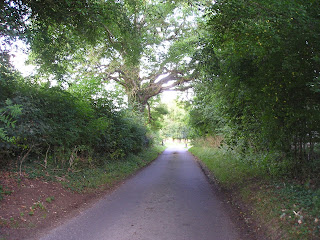The Earliest Signs of Spring
As I write this the rain is lashing against the window panes
and beating down upon the glass roof of the conservatory; unrelenting, its
endless patter has been sounding since before dawn. In the last hour the wind has risen and the
silver birch, its downward hanging branches blowing first this direction and
then the other, sheds its brittle twigs, nature’s way of pruning out the dead
wood.
There is no way of casting yourself free from the weather on
a day like this. From every room of the
house the rain calls, the views of the secret valley are as montone as the sky;
all shape is blurred and merges into one, no defined hills, no defined trees,
no defined river bed, even the clouds have been replaced by a heavy,
all-oppressing blanket of grey. It is as if the life-force has been drained
from the landscape.

Siskins are exotic looking winter visitors
A flash of colour reminds us that this is not the case. The colder air travelling towards us from the
north has driven before it birds desperate to find slightly better conditions. Far too exotic looking with their bright
yellow bodies and sooty black head and bib to be outside the tropics, siskins have
arrived to feed on the nut feeders. They
prefer the tiny, black niger seeds but the goldfinches are having none of it;
they want to keep those for themselves.
Flurries of feathers, a mix of yellows, golds and reds fall as they scrap
– the delicate lttle goldfinch is obviously tougher than it looks. From time to time, flocks of long-tailed tits
descend too to take their place in the food queue; they usually prefer to feed
high up in the trees, their search given way by the soft, contact calls they
make to keep together.
Long-tailed Tits only visit the feeders in bad weather
It is the birds that tell us that spring is really not so
far away. First it is the robins, their
sweet, melodic song sounding as if it should come from a bird twice their size,
perhaps a blackbird. Then it is the turn
of the giant sized birds, the raven and the red kite, not with song but with
the aerial acrobatics of their courtship displays. Buzzards follow too but they are more content
to circle ever higher, mewing to one another, attraction enough it seems. All three birds have been rarities for most
of the twentieth century but the reintroduction of the red kite in the 1980’s
helped protect the buzzards from persecution.
The ravens followed later, arriving in the secret valley with the dawn
of the new century – now all three are seen daily.
The forked tail is the easiest way to recognise the red kite
Winter aconites are the first of the flowers to appear,
their yellow button flowerheads opening on fine days to prove that they are
closely related to wild buttercups both in
flower shape and colour. Nothing will
hold them back and if they become covered in snow or rimed in frost it is of
little consequence to them: they are back as pert as ever once the thaw comes. Snowdrops quickly follow, also uncaring of
the weather although they do bow their heads as if allowing their shoulders to
take the brunt of it.
Winter aconites flower early whatever the weather
Every tree and shrub show signs of life too. The hazel, its catkins stubby, hard and green
for many weeks begin to lengthen, to grow brighter and looser until they live
up to their old and descriptive country name of lamb’s tails. Knocked back and discoloured by frost they
soon restore or are replaced by others threefold. Others are less precocious and prefer to show
the signs of spring more discreetly. The
hawthorn leaf buds show signs of swelling and take on a brighter hue; the
blackthorn and cherry flower buds also are clearly visible promising snowstorms
of white and pink petals in a month or two.
Hellebores flower early in the year
The day lilies won't flower for some months but their leaves are amongst the first to show
In the meantime, the rain has turned to snow. The countryside is turning white and still
the wind howls. Another day of winter to
be crossed off the calender before we can relax and say “Spring has come”.









Lovely photos and so nicely written.
ReplyDeleteI miss the kites, although one was seen over Shepton Mallett, just 20 mins from here. I sometimes hear that high pitched cry of a kite and expect to see one wheeling over head.
We do have buzzards here in Somerset, who are quite magestic.
Thanks, Kath. When I left the Chiltern Hills twelve years ago to move to the Cotswolds it was the red kites that I missed most of all. It was quite a few years before I saw them here and only the past three or four when I see them daily.
ReplyDeleteJohnson
What a delightful way to start the morning on the first day of March, reading your prose and imagining the birds winging about in your garden. It is snowing here, too, in Tennessee in the USA, but flowers abound and buds are at the ready.
ReplyDeleteFrances
Thank you, Frances. The sun is shining today and it is lovely to see some blue sky. If you can get out of the cold wind there is a little warmth in the sun.
ReplyDeleteOnly another twenty days to go and it will officially be spring!
Johnson